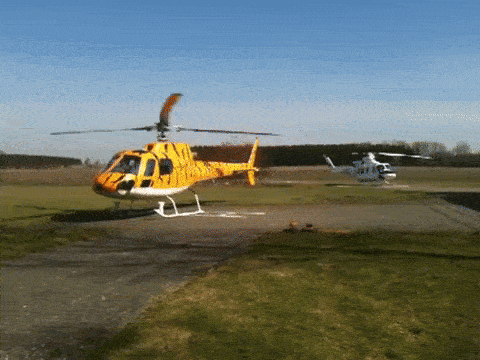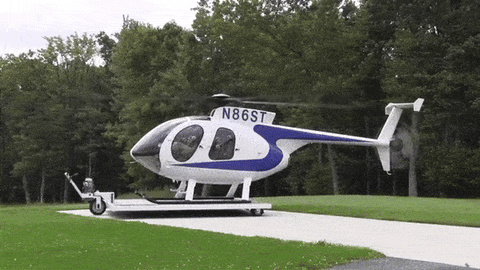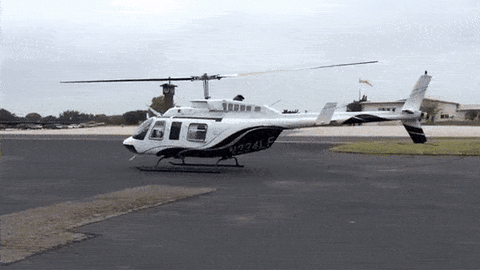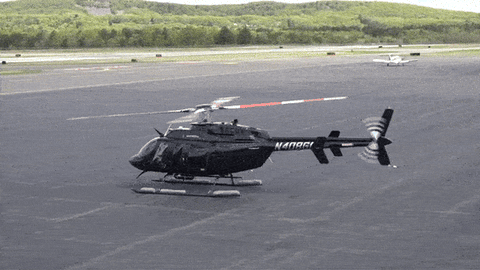6 Best Single Engine (Turbine Powered) Helicopters
The introduction of the turbine engine into helicopters changed their capability forever. The light weight of the turbine combined with its high power output made them a perfect fit for helicopters. Although the first turbine powered helicopter (the Kaman K-225) flew in 1947, they really didn't come into their own until the 1950's and 1960's with the introduction of the Bell Huey. The Bell UH-1 Iroquois (nicknamed 'Huey') was the fist mass produced turbine helicopter. It remains one of the most successful helicopters ever produced. The currently manufactured Bell 412 can trace its roots back to the original UH-1, a testament to the original design.
Our list below of the 6 Best single engine turbine helicopters is not in chronological order or based on whether one is better than the other. Also, it does not include military helicopters.
1. Bell 206B Jetranger Series

The iconic Bell Jetranger is without a doubt one of the most widely recognizable helicopters ever produced. Developed from (another iconic helicopter the Bell 47), the Bell 206 remains one of the most produced light single engine helicopters ever produced. The Bell Jetranger also has the (statistically) highest safety rating of ANY helicopter ever produced. Bell Helicopter ended production of the Jetranger in 2010 with over 8,000 manufactured and delivered.
2. Aerospatiale AS-350 Series

Developed in the 1970's, the AS350 Écureuil (or Squirrel) was designed to replace the Aerospatiale Alouette II. Originally powered by the Lycoming LTS-101 turbine, this proved to be the Achilles heel of the aircraft. Plagued with unreliability, Aerospatiale eventually replaced the Lycoming engine with the Turbomeca Arriel, which proved to be extremely reliable. With over 7,000 delivered, the AS350 is the most successful single engine helicopter produced outside of the United States.
3. Hughes 500 Series

The Hughes 500 was developed from a military observation helicopter called the OH-6. The Hughes 500 is a highly maneuverable helicopter with an excellent weight to power ratio. Because of its unique interior configuration, the Hughes 500 series was never adopted as a people transporting aircraft. However, due to its high maneuverability, it is very popular with law enforcement agencies and owner pilots. With over 4,700 units delivered, the Hughes 500 Series is the 3rd most successful helicopter series ever developed. Starting with the Hughes 500C in the 1960's, the aircraft has been continuously updated becoming the Hughes 500D, Hughes 500E and 530F. Hughes Helicopters was sold to McDonnell Douglas, at which point all of their helicopters are subsequently known as MD's.
4. Bell 206L LongRanger Series

In 1977, Bell Helicopter introduced the Bell 206L LongRanger, a stretched Jetranger with 2 additional seats in a club seating configuration. The aircraft was very popular in the executive transport field as it incorporated Bell's bifilar vibration absorption system, which results in a extremely smooth ride compared to the Jetranger. Over the years, Bell constantly improved the LongRanger until its final iteration in the 206L-IV. Forty years after its introduction, Bell ceased production of the LongRanger in 2017.
5. Bell 407

Although the Bell LongRanger was a highly successful aircraft, by the late 1990's, it was reaching technical obsolescence. Bell knew they needed to develop a 'better' LongRanger, one that was larger, faster and more capable. Although at first glance, the Bell 407 looks similar to the LongRanger, but that is where the similarities end. The Bell 407 features a four bladed main rotor, a composite tail boom and FADEC controlled engine. The 407 was instantly successful and is used in many fields including corporate transport, offshore and law enforcement. To date, over 1,400 Bell 407's have been manufactured and delivered.
6.Aerospatiale SA-341 Gazelle

The Aerospatiale Gazelle was designed and built in the 1970's for the French military. The Gazelle was the first helicopter to employ a shrouded tail rotor. The shrouded tail rotor is called a 'Fenestron' which means 'Fan-in-Fin.' The Fenestron's biggest benefit is safety. Throughout helicopter history, many people have been killed by accidentally walking into tail rotors. The Fenestron eliminates this possibility by being shrouded. Although innovative in design, the Fenestron has its drawbacks. It is far more complex than a conventional tail rotor, thus more costly to construct and it is not as effective (as a conventional tail rotor) in certain weight, temperature and altitude situations.

